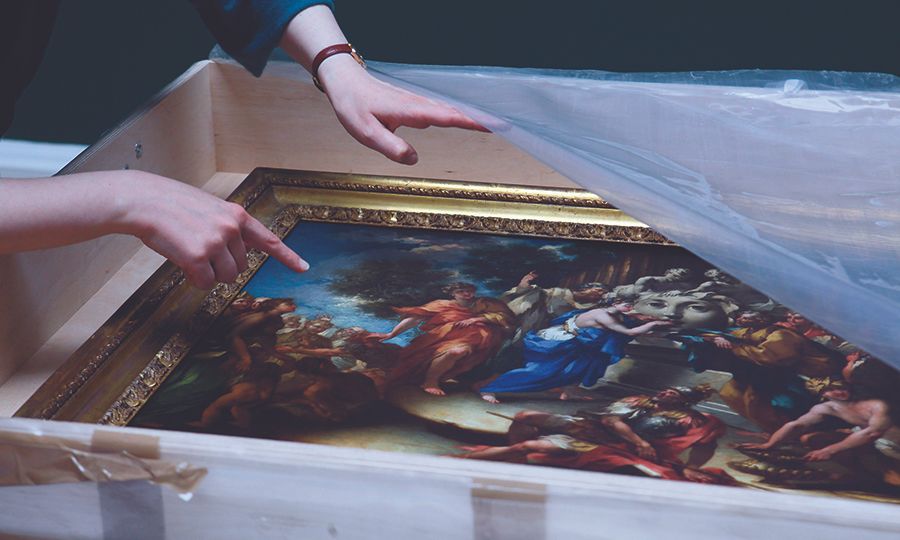Get the complete picture: to ensure a valuation is accurate for tax purposes, owners should gather clear evidence of a work’s provenance and quality
Photo: Matt Cardy/Getty Images
US tax season has now come to a close, but for collectors, the issues it poses are perennial. Collectors who donate valuable works to museums face the challenge of putting a specific price on these items to declare a charitable deduction on their tax returns. And heirs of collectors with art in their estates face a similar issue of determining value.
The process of assessing a work’s value can be a high-wire act, as the Internal Revenue Service (IRS) may decide that the valuation is too high or too low, potentially lumbering the taxpayer with an additional tax to pay and possible penalties.
However, the IRS offers assistance to taxpayers through the opportunity to receive a pre-appraisal from the agency’s Art Appraisal Services, known as a Statement of Value. This assistance costs $7,500 for one to three items and $400 for each additional item. The minority of items that are flagged as problematic are sent to the IRS’s Art Advisory Panel, a group of around 25 dealers, scholars, curators and academics who evaluate works valued at $50,000 or more.
Judging from the panel’s annual reports, the chance of taxpayers receiving a bill from the federal agency is relatively high. In the most recent report for the 2021 fiscal year, for example, only 35% of the appraisals received were accepted, while 26% were deemed too high (for objects donated to charities), and 39% were seen as too low (for objects in estates). Taking all of the 112 object appraisals evaluated by the panel, an aggregate $16,806,838 of misstated appraised values was found.
The quality of art and antique appraisals submitted with tax filings has occasionally been a subject of concern for the IRS, and has provoked congressional action. In 2006, penalties for what are described as “gross valuation misstatements” were enacted into the Pension Protection Act.
Under that law, taxpayers would be assessed at 30% of the tax underpayment if the appraised value of the object is found by the IRS to be off by 150% or more. This is in addition to the payment of the adjusted tax and interest on that amount. There may be no extra payment of tax if the underpayment is less than $1,000 or if the appraisal was made “in good faith”.
Disagreements over valuations of objects are not solely the result of malpractice on the part of an appraiser, or greed on the part of the taxpayer. The IRS has long maintained that objects have only one price, whereas appraisers contend that the price that an object might fetch if it were put up for sale may differ sharply from what it could cost if a buyer were seeking to purchase it. Viewers of the PBS programme Antiques Roadshow (the US version of the popular BBC programme) are aware that two different valuations are often given for the same item: one for the auction estimate and another for the insurance price.
Alice Duncan, a senior director at Gerald Peters Gallery in New York and a member of the Art Advisory Panel, says that appraisers periodically contact her about “what triggers our examination and what to avoid, rather than specifics about value”. Instead of a direct answer, she tells them what “professional appraisers should submit: good photography, condition reports that are qualified and proficient (especially if condition factors into their valuation) and a sensible discussion of their decision on the value. Evidence of research, such as a catalogue raisonné number, are also good indicators of how qualified the report and the appraiser are.”
Obtaining an advance valuation appraisal from the IRS eliminates the chances of being found liable for under- or overvaluing artworks. Ralph Lerner, a New York lawyer, says that he has advised estate clients to apply for Statement of Value rulings by the Art Appraisal Services, because “it helps administer the estate so you can distribute the assets”. Whatever the appraisal service determines to be an object’s value, “the IRS is bound by that value, so I could take pieces from the estate, put them up at auction, and, if [they] sold for higher than the IRS ruling values, I will only have to pay capital gains tax on the increase, and not the 40% estate tax on the increase in value,” Lerner says.
However, he adds, “The IRS might refuse or delay the issuance of the advance ruling for estate tax purposes, since the IRS could ask the executor whether there is an intention to sell the artwork shortly after the issuance of the ruling.” The reason, he says, is that the best measure of an artwork’s value is the amount for which it is sold, especially if the sale takes place shortly after the appraisal. So the IRS does not want to be embarrassed by issuing a ruling valuing an artwork for $10m—which is binding on the IRS—that then sells nine months later for $15m.”

